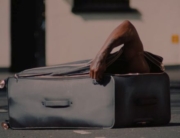During the premiere of Fatih Akin’s In the Fade, in which a nail bomb becomes an important plot element, viewers may have had a sense of queasiness, given the terroristic attack in Birmingham, England, just four days earlier. That incident, during which a suicide bomber detonated a similar device, had to have been on viewers’ minds as they submitted to metal detectors and scanners in order to enter the Grand Théâtre Lumière. It also could have been a bit unsettling watching a nail bomb being made onscreen; although the movie is not a how-to, it’s possible to fill in the missing ingredients.
When Akin’s film is eventually released in theaters worldwide, it will remain timely solely for its explicit warning of homegrown extreme-right terrorism, a danger that is often overlooked whenever an ISIS-related strike in the West dominates the news. Well-intended but too restrained, the movie, though, doesn’t quite match its urgent message.
A modern-day, rainy noir, Fade was one of the few genre films in this year’s competition, a cross between a courtroom and revenge drama. Yet given the story line and subject matter, the film moves along at a methodical, by-the-numbers pace. It doesn’t exactly plod along, nor does it propel forward. It lays out all the facts, and like in a good mystery, most of the major clues pop up near the beginning. Yet you feel like you’re being told a story and not viscerally experiencing it, despite the stakes involved.
This is strange, considering the bombing deaths of the husband, Nuri, and the only child, the cherubic Rocco, of German-born Katja (Diane Kruger). She had dropped off her son at her husband’s office so she could enjoy a me-day at a hammam with her sister. While she’s away, a bomb detonates in front of the office killing Nuri and Rocco instantly.
At first, the police question her husband’s activities and contacts: a Turkish Kurd, Nuri (Numan Acar) was a former drug dealer who served four years in prison, but he had no allegiance to any group. Katja is also questioned on how she and Nuri, a tax advisor and translator, could pay for the 70,000 euro deposit for their large suburban home. As part of the investigation, the police search the family’s home and find a small amount of drugs: Katja’s stash, too small an amount for any charges. Drugs give her a sense of relief: she needs to have a bump of coke to endure her mother-in-law’s blunt accusation that she’s the reason why little Rocco was in harm’s way. Through it all, Katja has more than a hunch regarding who is responsible. It turns out she’s right, and the movie becomes more effective as a procedural set in the courtroom, after two neo-Nazis suspects are arrested.
Kruger won the Best Actress award for her performance. Much has been made about how this is the first film in her home country the West German-born actress has made, and her performance is certainly credible and convincing—even when the film is less so. At one point, Katja plays detective, but she hardly blends in anywhere anonymously. Considering the amount of drugs she consumes, she’s preternaturally glowing. (Katja also has extraordinary hearing while eavesdropping on a conversation occurring on a waves-pounding beach.) Furthermore, her multiple tattoos convey more intel about Katja’s past and lifestyle than the script provides—it’s time for a movie moratorium on body art as a clichéd conveyor of class.
Not to take anything away from her, but Kruger really didn’t have much competition in a weak year for actresses at Cannes. Besides Maryana Spivak in Loveless, who plays a misanthropic bourgeois Russian who regrets and resents having a son, there wasn’t any other lead role that had the emotional heft as Katja’s.
Perhaps the main reason why In the Fade is not as involving as it should have been is the camera’s point of view. It’s too objective, too distant, when the film really centers on Katja’s guilt-ridden story. Although the veracity of her observations is called into question in the courtroom, the screenplay staunchly backs her up. It’s only at the end that the camera work and her worldview merge, becoming one, though briefly and a little too late.

















Leave A Comment